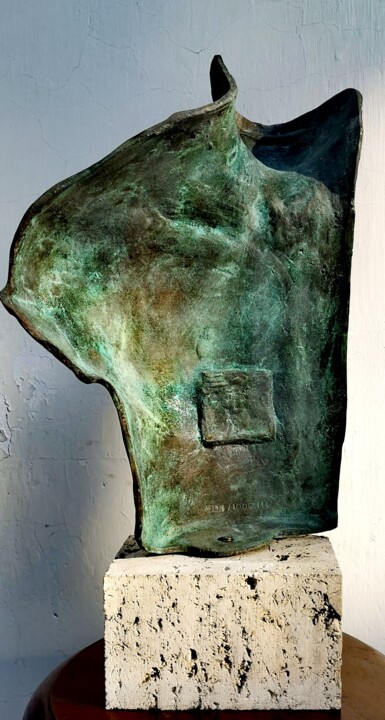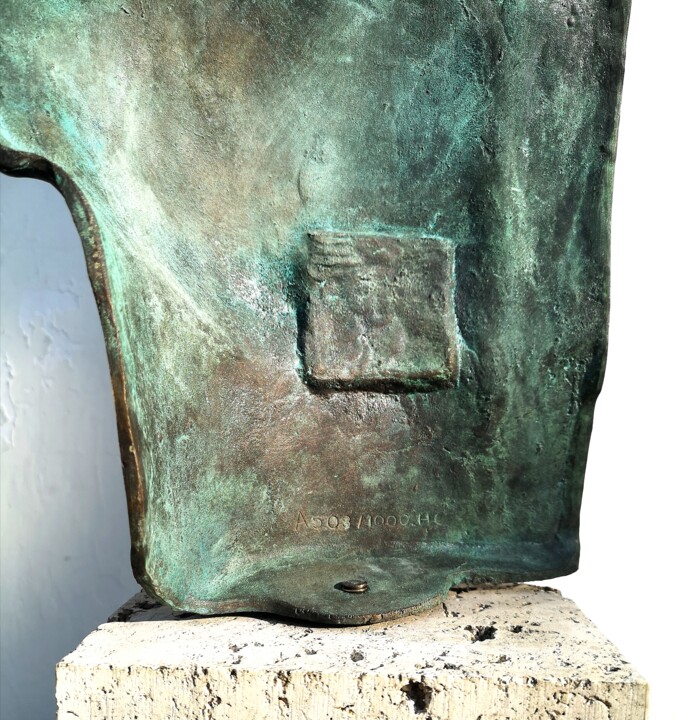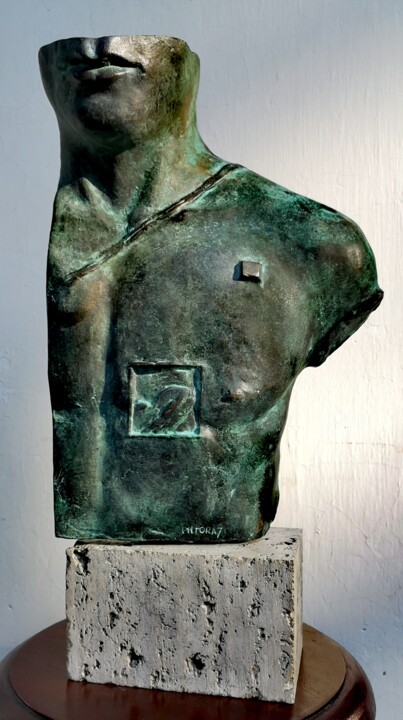



ASKLEPIOS (1988) Γλυπτική από Igor Mitoraj
Πουλήθηκε
Δείτε περισσότερα από Igor MitorajΟ καλλιτέχνης προσφέρει έργα κατόπιν παραγγελίας
Χάσατε την ευκαιρία να αγοράσετε αυτό το έργο; Καλά νέα: ο καλλιτέχνης μπορεί επίσης να δημιουργήσει ένα προσαρμοσμένο έργο, μόνο για εσάς!
Πωλητής PODS GALLERY
-
Περιορισμένη έκδοση (# A508/1000HC/1000)
Γλυπτική,
Μπρούντζος
στο Πέτρα
- Διαστάσεις Ύψος 18,5in, Πλάτος 10,4in / 10.00 kg
- Κατάλληλο για εξωτερικούς χώρους? Όχι, Αυτό το έργο τέχνης δεν μπορεί να εμφανιστεί σε εξωτερικό χώρο
- Κατηγορίες Γλυπτά κάτω των 20.000 $ Εικονιστικής
The work was made in the techniques of: bronze, stone. It is a material used to create sculptures in the casting technique, well known in antiquity in the period known as the "Bronze Age". It is an alloy of copper and tin or other metals, named after the ancient city of Brundisium in today's Italy. Bronze was used for casting agricultural and craft tools and discs, on which the first money was minted. As an artistic technique, it appeared already in the archaic period in ancient Greece, Egypt, Persia and the whole of Asia Minor. For casting bronze sculptures on the so-called Lost wax clay and plaster molds were used, the shape of which was obtained by sticking them around the wax prototype of the sculpture. The wax was removed by temperature, and a brown mass was poured into the mold, which, after concentration, was peeled from the outer clay shell, thus creating a sculpture. Since ancient times, this technique has been perfected and maintains its popularity until today. The most famous bronze sculptures are "The coachman of Delph", "David" by Donatello, "Perseus with the head of Medusa" by Cellini, "The Thinker" by Rodin and the Monument to Fryderyk Chopin in Warsaw by Wacław Szymanowski.
The subject of work is a human being. There is a universal topic for the history of art: in prehistory, human figures played a mystical role, in the Renaissance they were an aesthetic model of beauty, and in contemporary art this theme focuses primarily on consciousness, perception and the human interior, not necessarily presenting it in its entirety, but depicting it what is part of his mind.
The atmosphere of work is characterized by calmness, which is most often associated with nature motifs or abstraction in a subtle range of colors.
Σχετικά θέματα
Ο Igor Mitoraj (1944-2014) ήταν σύγχρονος Πολωνός γλύπτης. Θεωρείται ως ένας από τους πιο διεθνώς αναγνωρισμένους Πολωνούς γλύπτες και γνωστός για τα κατακερματισμένα γλυπτά του ανθρώπινου σώματος που κατασκευάζονται συχνά για δημόσιες εγκαταστάσεις μεγάλης κλίμακας.
Το γλυπτικό στυλ του Mitoraj ήταν κλασικά εμπνευσμένο, με μεγάλη έμφαση στον καλοσχεδιασμένο κορμό. Τα έργα του συχνά προσπαθούν να αντιμετωπίσουν προβλήματα σχετικά με το ανθρώπινο σώμα, την ομορφιά και την ευθραυστότητά του, τη θλίψη του, καθώς και βαθύτερα μέρη της ανθρώπινης φύσης που εκφυλίζονται με την πάροδο του χρόνου.
Το 2005 ο Igor Mitoraj έλαβε το Χρυσό Μετάλλιο για την Αξία στον Πολιτισμό - Gloria Artis και το 2012 έλαβε τον Σταυρό του Διοικητή του Τάγματος της Polonia Restituta.
-
Ιθαγένεια:
ΠΟΛΩΝΊΑ

- Ημερομηνία γεννήσεως : άγνωστη ημερομηνία
- καλλιτεχνική τομείς: Εκπροσωπείται από μια συλλογή,
- Ομάδες: Σύγχρονοι Πολωνοί Καλλιτέχνες Καλλιτέχνες που παρουσιάζονται από μια συλλογή













